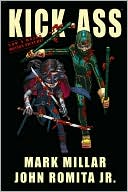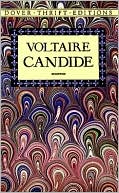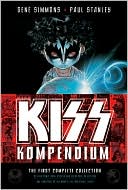An Anthology of Graphic Fiction, Cartoons, and True Stories
Comic artist Ivan Brunetti, the creator of Schizo, offers a best-of anthology of contemporary art comics, along with some classic comic strips and other historical materials that have retained a “modern” sensibility. As with Chris Ware’s selections for his best-selling McSweeney’s anthology, Brunetti’s choices make for a highly personal book (“my criteria were simple: these are comics that I savor and often revisit”) that serves as a broad historical overview of the medium and a round-up of...
Search in google:
Comic artist Ivan Brunetti, the creator of Schizo, offers a best-of anthology of contemporary art comics, along with some classic comic strips and other historical materials that have retained a “modern” sensibility. As with Chris Ware’s selections for his best-selling McSweeney’s anthology, Brunetti’s choices make for a highly personal book (“my criteria were simple: these are comics that I savor and often revisit”) that serves as a broad historical overview of the medium and a round-up of some of today’s best and most interesting North American comic artists. Included here are works from such well-known artists as Robert Crumb, Kim Deitch, Art Spiegelman, Chris Ware, Ben Katchor, Charles Burns, Gary Panter, Seth, Phoebe Gloeckner, Daniel Clowes, Lynda Barry, Joe Sacco, and Jaime and Gilbert Hernandez, as well as many other pioneers whose names may be less familiar.Brunetti offers selections from the works of more than seventy-five avant-garde comic artists. His selections are arranged by genre and grouped thematically. Luxuriously produced and printed in four-color throughout, the book is a must-have for collectors, aficionados, readers of comics, and those generally interested in cutting-edge art and literature.The New York Times - David HajduThe book is a manifesto of comics' coming of age. Unlike several earlier anthologies of comics, including two dense volumes published by the Smithsonian (one of newspaper comics, one of comic-book stories) and a fine collection of newspaper strips compiled by the comics artist Jerry Robinson ("The Comics"), the Anthology of Graphic Fiction, Cartoons, and True Stories is not an overview of the history of comics from their birth in the lurid Sunday supplements of the turn of the last century through the rise of superheroes in the late 1930s to the triumph of Art Spiegelman's Pulitzer for Maus in 1992. Rather, it concentrates almost solely on recent work by contemporary artists and writers doing what Brunetti calls "art comics" - personal, deeply intimate, idiosyncratic and sometimes wild comics published for the most part by independent presses.
\ Fantagraphics Books"Great Caesar''s Ghost, this is one of the most stunning—and smartly assembled—anthologies I''ve ever seen."—Eric Reynolds, Fantagraphics Books\ — Eric Reynolds\ \ \ \ \ \ The Patriot-News"Brunetti has compiled an impressive ‘greatest hits’ collection. . . . A perfect book for a neophyte."—Chris Mautner, The Patriot-News\ — Chris Mautner\ \ \ \ David HajduThe book is a manifesto of comics’ coming of age. Unlike several earlier anthologies of comics, including two dense volumes published by the Smithsonian (one of newspaper comics, one of comic-book stories) and a fine collection of newspaper strips compiled by the comics artist Jerry Robinson (“The Comics”), the Anthology of Graphic Fiction, Cartoons, and True Stories is not an overview of the history of comics from their birth in the lurid Sunday supplements of the turn of the last century through the rise of superheroes in the late 1930s to the triumph of Art Spiegelman’s Pulitzer for Maus in 1992. Rather, it concentrates almost solely on recent work by contemporary artists and writers doing what Brunetti calls “art comics” — personal, deeply intimate, idiosyncratic and sometimes wild comics published for the most part by independent presses.\ — The New York Times\ \ \ \ \ Publishers WeeklyBrunetti's second collection of his favorite cartoonists' work is even better than the first-more far-ranging, more personal and eccentric. Clearly a tour of one person's singular tastes, it's arranged in a stream-of-consciousness "oh, and you have to see this one" sort of way: work by 80-odd cartoonists, mostly from the past few decades, but also incorporating some early-1900s comic strips, a 1940s-vintage Fletcher Hanks story and several circa 1950 Harvey Kurtzman pieces as well as a smattering of previously unpublished gems. It's possible to quibble with some of Brunetti's aesthetic biases (or with his clustering most of the book's women cartoonists together in a block), but not with his selections. Nearly every piece is a killer, from big names like Chris Ware and Daniel Clowes as well as lesser-knowns like Laura Park and Matthew Thurber, and there's an enormous range of expressive styles and narrative approaches on display. The effect is something like Jerome Rothenberg's poetry anthologies: an investigation of unsettling, mind-opening places where only comics can travel. It's a pleasure to read straight through, and all but the most experienced art-comics enthusiasts are likely to discover a few new favorites. (Oct.)\ Copyright © Reed Business Information, a division of Reed Elsevier Inc. All rights reserved.\ \ \ \ \ Publishers WeeklyBrunetti's stated criteria for what made the cut for this hearty and hefty volume comes in his refreshingly honest introduction: "Ultimately... these are comics that I savor and often revisit." Luckily Brunetti's got a fabulous eye for an artist's signature work. The selections are difficult to argue with, hitting not just the expected luminaries (Chris Ware, Daniel Clowes) but lesser-knowns like surrealist Mark Beyer and Richard McGuire, whose "Here" breaks down the time-space continuum with mind-bending ease. Brunetti includes usually just one work from each artist, but makes exceptions for the likes of R. Crumb, and he isn't above putting his own work in, a move that's somehow more charming than obnoxious. Any fallow patches are more than made up for by, say, Jaime Hernandez's cinematic miniepic "Flies on the Ceiling." Unlike other recent anthologies, women cartoonists are represented with some of the best work in the book, like Debbie Drechsler's horrific "Visitors in the Night." While one may question the need for another comics anthology in a year unusually heavy with them, Brunetti has gone beyond the obvious to create an anthology of what is truly the finest in comics. (Oct.) Copyright 2006 Reed Business Information.\ \ \ \ \ Kirkus ReviewsDon't be fooled by the prosaic title or the whiff of pedagogy in the introduction; this is the world of comics-or at least the North American, English-speaking part of that world-at its liveliest. The second anthology edited by Brunetti (volume one was published in 2006) showcases some of the form's history and development, highlights some of the best and better-known contemporary artists and introduces some cutting-edge innovators working at the vanguard of form and collage. The thematic organization by the editor (a Chicago-based professor and cartoonist) is compellingly idiosyncratic, juxtaposing Chris Ware's one-pager of a superhero named "God" with R. Sikoryak's series of covers for the fictional Action Camus series-a takeoff on Action Comics with a superhero who is part Superman, part Albert Camus's The Stranger. The work included addresses plenty of psycho-philosophical issues-death, identity, dreams, memory, death and the possibility of an afterlife-while also including a tribute to MAD magazine's creator Harvey Kurtzman, with his work followed by extended graphic celebrations by such leading acolytes as Robert Crumb and Art Spiegelman. The latter stresses how far Kurtzman's influence extended beyond fellow artists to the culture at large: "I think Harvey's MAD was more important than pot and LSD in shaping the generation that protested the Vietnam War." The obsessions probed throughout the anthology are as personal as the artistry, with Crumb offering a series of strips on record collecting (the first in collaboration with Harvey Pekar) and the exotic lure of what were once known as "race records"; Joe Matt on porn addiction; and Lynda Barry on dancing (and "keepers of thegroove"). In David Heatley's closing " Portrait of My Mom" and "Portrait of My Dad," it's plain that what he's really offering is a portrait of himself. Explains Brunetti, "I have tried to represent a variety of approaches while retaining a sense of wholeness and interconnectedness among the stories. If the first volume viewed comics as a developing human being, then this volume treats them as an extended family."The anthology suggests that, thankfully, this extended family isn't close to exhausting its creative potential.\ \








